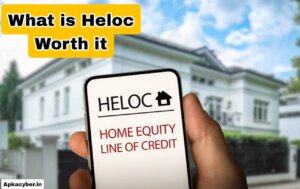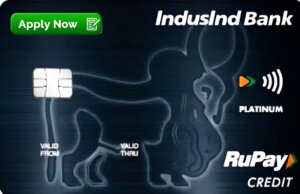
In the realm of personal finance, tapping into your home’s equity is one way to unlock financial flexibility. A Home Equity Line of Credit (HELOC) is a popular method for doing just that, offering homeowners the ability to borrow against the equity they’ve built in their homes. But is a HELOC a good idea? Like any financial product, it comes with both benefits and drawbacks. Understanding these is essential before making a commitment.
This article explores what a HELOC is, how it works, and the key pros and cons to help you decide whether it’s the right financial tool for your needs.
Table of Contents
ToggleWhat is a HELOC?
A Home Equity Line of Credit (HELOC) is a revolving line of credit secured by your home. Similar to a credit card, it allows you to borrow up to a certain limit, repay the balance, and borrow again as needed during a set draw period, usually 5 to 10 years. The amount you can borrow typically depends on the amount of equity you have in your home — the difference between your home’s market value and what you owe on your mortgage.
HELOCs generally come with variable interest rates, meaning your monthly payments may change over time. After the draw period ends, you enter the repayment phase, which can last 10 to 20 years, during which you repay both principal and interest.
Pros of a HELOC
1. Flexibility in Borrowing
One of the biggest advantages of a HELOC is its flexibility. Unlike a traditional home equity loan that provides a lump sum upfront, a HELOC allows you to borrow only what you need, when you need it. This is particularly beneficial for ongoing expenses, such as home renovations, medical bills, or education costs, where the total cost may be uncertain.
2. Lower Interest Rates Than Other Credit Options
Because a HELOC is secured by your home, it usually offers lower interest rates than unsecured forms of borrowing, like credit cards or personal loans. This can make it a more affordable option for large expenses or consolidating high-interest debt.
3. Interest-Only Payment Option During Draw Period
During the initial draw period, many HELOCs allow you to make interest-only payments. This can ease your financial burden in the short term, especially if you’re using the funds for a project that will ultimately increase your income or the value of your home.
4. Potential Tax Deductibility
If you use the HELOC funds to “buy, build, or substantially improve” your home, the interest may be tax-deductible. This tax benefit can further reduce the overall cost of borrowing. However, it’s crucial to consult a tax advisor to determine your eligibility based on current IRS rules.
5. Access to Large Sums
Depending on how much equity you’ve built, a HELOC can give you access to a substantial amount of money. This makes it useful for major life expenses, such as funding a child’s college education, launching a small business, or covering emergency costs.
6. Reusable Credit Line
Since it functions as a revolving credit line, you can reuse the available credit after repaying the borrowed amount. This makes a HELOC an excellent long-term financial tool for those who expect intermittent large expenses.
Cons of a HELOC
1. Risk of Losing Your Home
Perhaps the most significant downside of a HELOC is that your home serves as collateral. If you fail to make payments, the lender can foreclose on your property. This risk makes HELOCs inherently more dangerous than unsecured loans.
2. Variable Interest Rates
HELOCs often come with variable interest rates that fluctuate with market conditions. While this can sometimes result in lower payments, it can also mean unexpected spikes in your monthly obligations, making it harder to budget over time.
3. Potential for Over-Borrowing
Because the money is readily available, some homeowners may be tempted to overspend or use the funds for non-essential items. This can lead to financial strain, especially if income circumstances change or the repayment period begins with a larger-than-expected balance.
4. Rising Monthly Payments During Repayment Phase
Once the draw period ends, the repayment phase begins, often including both principal and interest. If you’ve been making interest-only payments, this transition can result in significantly higher monthly obligations, which may strain your budget.
5. Fees and Closing Costs
While generally less expensive than refinancing a mortgage, HELOCs still come with fees. These can include appraisal fees, application fees, annual fees, and even early termination fees. It’s important to account for these costs when deciding whether a HELOC is financially viable.
6. Home Value Fluctuation Risks
If the housing market takes a downturn and your home value decreases, you could owe more than your house is worth, especially if you maxed out your HELOC. This can make it difficult to sell or refinance your property and may even lead to negative equity.
When is a HELOC a Good Idea?
A HELOC can be a valuable financial tool in several specific scenarios:
Home Renovations
Using a HELOC for renovations that increase your home’s value can be a smart investment. Not only can the updates make your living space more enjoyable, but they may also yield a strong return if you sell your home.
Debt Consolidation
If you’re carrying high-interest credit card debt, consolidating it into a HELOC with a lower interest rate can save money and simplify payments. However, this strategy only works if you avoid running up new credit card balances.
Emergency Fund Backup
Some homeowners open a HELOC not with the intent to borrow immediately, but as a financial safety net in case of unexpected expenses. Having the line available can offer peace of mind, especially for self-employed individuals or retirees.
Educational Expenses
Using a HELOC to fund education, particularly for short-term programs or certifications that boost income potential, can be a sound strategy. However, it’s vital to weigh this against other options, such as student loans or scholarships.
When is a HELOC Not a Good Idea?
There are also situations where a HELOC may not be advisable:
Unstable Income
If your income is irregular or uncertain, the risk of being unable to make payments—especially once the repayment phase begins—could jeopardize your home. A more predictable loan product may be safer.
Speculative Investments
Using a HELOC to invest in volatile markets or unproven business ventures can be highly risky. If your investments don’t pan out, you still owe the debt—and possibly your house.
Rising Interest Rate Environment
In times of rising interest rates, the cost of borrowing via a HELOC can increase significantly over time. This can erode the benefits of the lower initial interest rate.
Short-Term Homeownership Plans
If you plan to move within a few years, opening a HELOC may not make sense. Selling your home would require repaying the balance, and short-term use may not justify the setup costs and fees.

Tips for Using a HELOC Wisely
To make the most of a HELOC, consider the following best practices:
-
Borrow conservatively. Don’t treat your home’s equity like a piggy bank. Only borrow what you need and can afford to repay.
-
Have a repayment strategy. Plan how you’ll pay back the principal, especially after the draw period ends.
-
Monitor your interest rate. Be aware of how fluctuations will affect your payments and adjust your budget accordingly.
-
Shop around. Compare terms from multiple lenders, including interest rates, fees, and flexibility in repayment terms.
-
Use funds strategically. Focus on borrowing for value-enhancing or necessary expenses, not discretionary purchases.
Alternatives to a HELOC
Before settling on a HELOC, it’s wise to explore other financing options:
-
Home Equity Loan: Offers a fixed interest rate and lump sum payment. Ideal for those who prefer predictable payments.
-
Cash-Out Refinance: Involves refinancing your mortgage for more than you owe and taking the difference in cash.
-
Personal Loan: Unsecured loan with no risk to your home, though interest rates are typically higher.
-
Credit Cards: Best for short-term borrowing, especially if you can pay off the balance quickly or use 0% intro APR offers.
-
Savings: If possible, using savings to fund large purchases avoids debt altogether.

Final Thoughts: Is a HELOC Right for You?
A HELOC can be a powerful financial tool when used responsibly and under the right circumstances. It offers flexibility, competitive interest rates, and potentially favorable tax treatment. However, it also carries risks, particularly the possibility of losing your home if you can’t keep up with payments.
Whether a HELOC is a good idea depends on your personal financial situation, goals, and discipline. Before committing, consider your reasons for borrowing, evaluate alternative options, and consult with a financial advisor to ensure the decision aligns with your long-term financial well-being.
In summary, a HELOC isn’t inherently good or bad—it’s simply a tool. Like any tool, its effectiveness depends on how and why it’s used. Make your decision carefully, and you could turn your home equity into a strategic asset.
